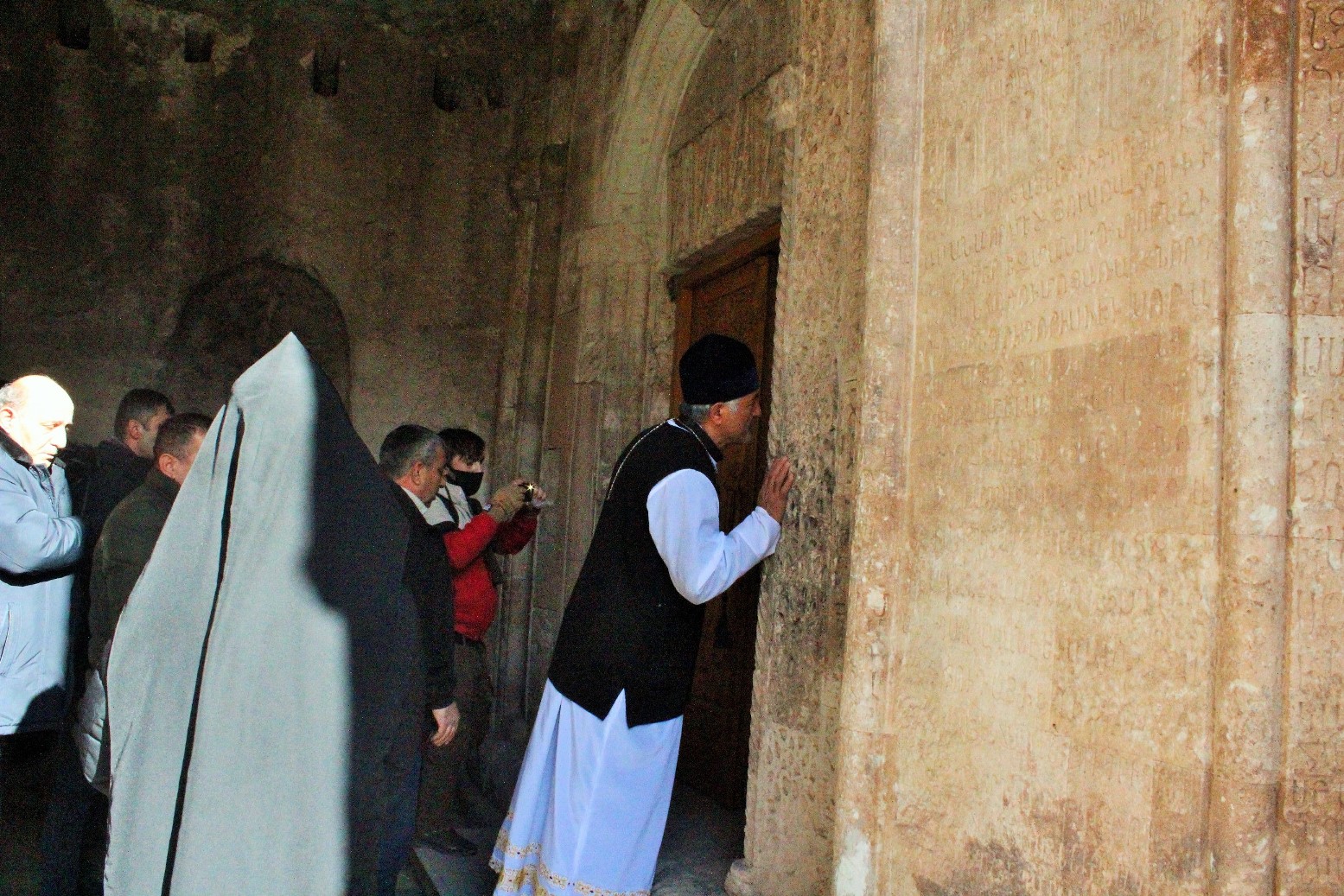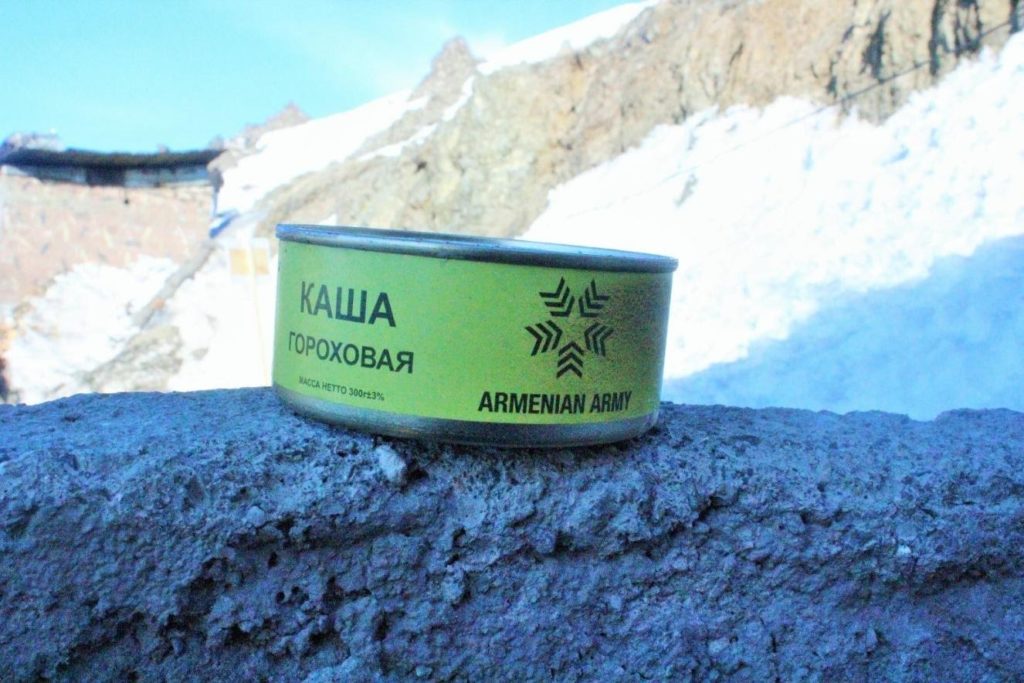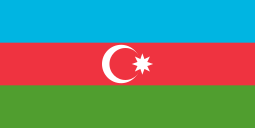
The first Christmas of freedom in Kalbajar
10 January 2021
(Kalbajar-Goygol)
A Russian soldier is guarding the Khudavang (Dadivank) monastery. Not far from it, 6 Armenian priests stand out. Rafig Danakari, deputy chairman of the Albanian-Udi Christian community, walks towards the monastery with a group of community members. They enter to perform a religious rite. Armenian priests watch the ceremony from the sidelines.
Members of the Albanian-Udi religious community, the successor of the Albanian Apostolic Independent Church in the Caucasus, are visiting the Khudavang monastery complex for the third time. Danakari says they hope to perform the next rituals at a religious center in the village of Tug in Khojavend and at the Agoglan monastery in Lachin.
We went to Kalbajar following the way the Azerbaijani army did recently. 27 years ago, majority of the people of Kalbajar started IDP life in this way. We are still moving upwards along the edge of Murovdag. The ground is icy, the mountains are snowy, but the sun is shining. We climb to the top. There are only cliffs and tortuous roads around. This is a way where heavy vehicles chain their tires to prevent them from slipping on ice and sinking into mud. 27 years ago, young, old people, children had to walk a long distance in cold weather to reach Khanlar of that time, the present-day Goygol region.
Now the road is a little wider. At that time it was narrower and out of fix. Later, Azerbaijani soldiers used it.
The city was occupied by Armenian forces on 2 April 1993.
In April 1993, the United Nations Security Council adopted Resolution 822 which called for the withdrawal of all occupying forces from the Kalbajar district, including the town of Kalbajar.
As part of an agreement that ended the 2020 Karabakh War the town and its surrounding district were initially to be returned to Azerbaijani control by 15 November 2020, but this deadline was subsequently extended to 25 November 2020.
Before the occupation, access to Kalbajar was possible in two ways; Aghdara-Tartar and Lachin-Shusha. Since April 1993, units of the Armenian Armed Forces have been in control of both.
We reach the post at Omar Pass. Azerbaijani soldiers have been on guard here since November 25. The military does not allow their photos to be taken and their names to be written. Although the fight is over, the service continues.

Earlier, Armenian soldiers stood at this post. They went and left food.
We continue driving through bumpy roads. For 27 years, only military equipment has passed through here. After a few hours, we head out to an area where the sun is high and the ice is melting. Our car speeds up and the villages of Kalbajar begin to appear in front of us. Houses that were severely damaged during the years of occupation…
As we ascend, we witness a completely new destruction in a large area. It was a military unit that belonged to the Armenian army and was blown up by them. Thus, the forests and settlements recently destroyed by the Armenian military and civilians are beginning to appear.
We end our complaint about the road here, because we are moving to the asphalt road connecting Kalbajar to the Vardenis region of Armenia.
Although the cliffs and mountains are beautiful, the landscape is spoiled by cut logs, fallen trees, and broken branches. There are a lot of news in both local and international media about the deforestation of Kalbajar by the settled Armenians before leaving the region. "Logs and fallen trees" are widespread on the right and left sides of the road, along the banks of the Tartar River, which flows through the region.
After a while, these cut logs and broken wood "landscapes" are replaced by a burned-out cafe, restaurant, and gas station. Even power plants were destroyed and burned. Of course, we can add houses and cars to this list.
A group of soldiers approached us when they saw us taking photos, we got acquainted. We are reminded to be careful, because we are likely to face a "mine surprise". The surroundings are snow and ice. We have to move in places with footprints on the snow. When we try to get out of the "path" to take some shots more closely, we hear the words "it has not been checked yet", that is, it is not known whether there is a mine.
… We return to Goygol. On the same "torturous roads" of 27 years ago. But this return is not as torturing as before, at least spiritually and morally.













